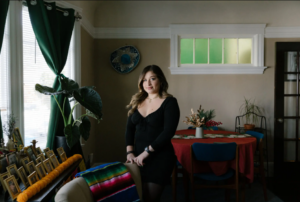Latinas Have Struggled to Build Savings, but a Younger Cohort Is Making Gains

Before Lupita Uribe married in 2020, she told her husband-to-be that a wedding wasn’t in her future unless he was OK with two promises she had made herself. One: She intended to keep living in San Francisco, where she had grown up and where she works in internal communications for the software developer Twilio. Two: Her mother would eventually move in with her.
“I always say I’m my parents’ retirement plan,” said Ms. Uribe, 29. As a Latina, she said, she knows that caring for aging family members is a part of her culture and nonnegotiable. But making it happen financially, something she is working on, can come with challenges.
Last year, the Institute for Women’s Policy Research found that compared with every other racial, ethnic and gender group, Latinas earned the least. They are also the most likely to be what is called unbanked, or to have no bank account, and to work in lower-wage jobs without pensions or retirement savings plans, said Judy Chapa, a financial educator who helped start a two-year study, the Latina Savings Project, with Mana, an advocacy organization for Latinas, and a nonprofit group, the Women’s Institute for a Secure Retirement.
Because Latinas are one of the longest-living demographic groups — Hispanic American women can expect to live to 84, second only to Asian American women, at 87, according to the Centers for Disease Control and Prevention — the consequences of low wages and a lack of access to workplace savings opportunities add up. The longer life expectancy becomes a mixed blessing, translating to more financial burdens in old age, the Social Security Administration has found. Overall, 42 percent of women who receive Social Security benefits rely on them for more than half their income, according to the administration.
A number of issues contribute to Hispanic women’s lack of collective wealth, experts said. There is a significant pay gap between them and others: They earn 57 cents on the dollar compared with white men, a bigger gap than Black and white women face. Over a 40-year career, that gap shortchanges them by more than $1.2 million, said Jasmine Tucker, director of research at the National Women’s Law Center. That gap is exacerbated by breaks from the work force to care for children or older relatives, she said.
In some households, traditional gender roles that can leave Latinas dependent on spouses can render them financially insecure, said Fernando Torres-Gil, director of the Center for Policy Research on Aging at the U.C.L.A. Luskin School of Public Affairs and a member of the Latino Policy & Politics Institute. “For a lot of them, it’s still: The husband will provide a long, happy life,” he said.